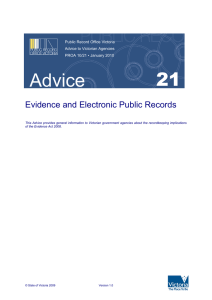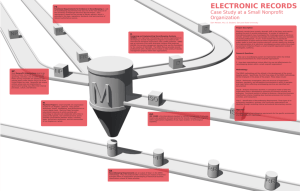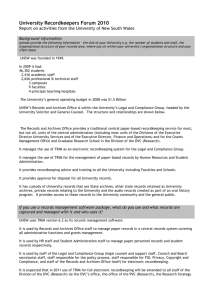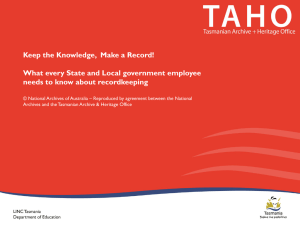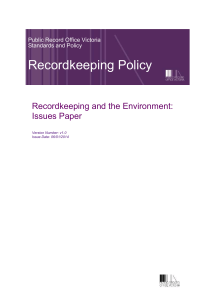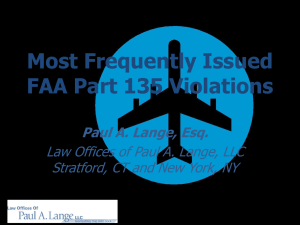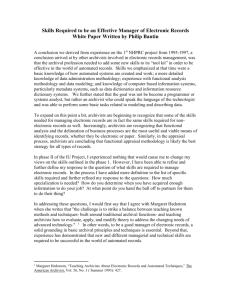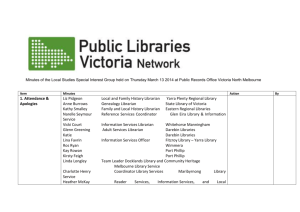Evidence Act 2008 and recordkeeping JS VECCI 20100518
advertisement
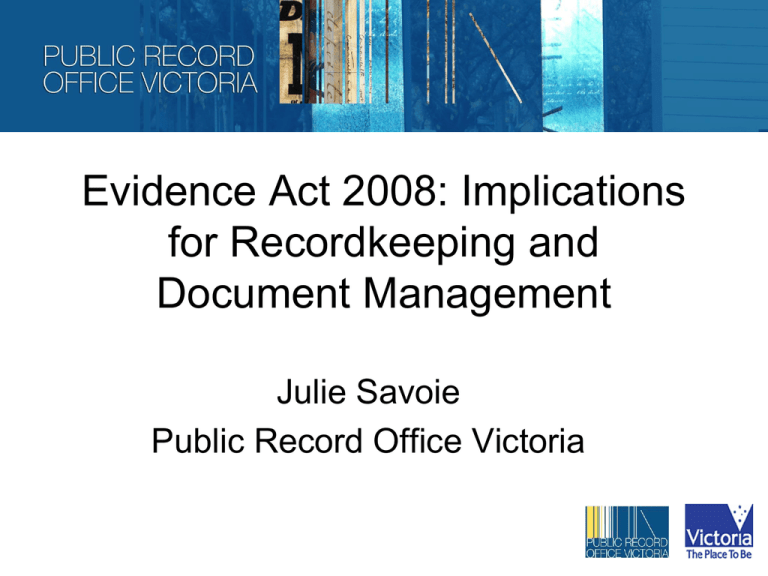
Evidence Act 2008: Implications for Recordkeeping and Document Management Julie Savoie Public Record Office Victoria Today I’ll talk about • Brief history of the Evidence Act 2008 • Changes to the Evidence Act • Electronic Documents and eDiscovery • Good Records, Good Evidence Why does evidence law matter? • Evidence law provides the “language” of litigation • All relevant evidence must be produced • Documentary evidence is the cornerstone of many cases What is the state of play nationally? • Uniform Evidence Acts in the Commonwealth and NSW from 1 January 1995 • Tasmania introduced mirror legislation in 2001 • Victoria’s Evidence Act 2008 came into force 1 January 2010 • Other states and territories remain common-law jurisdictions Why unify evidence law? • Rules were derived from past cases common law • Different and sometimes mutually incompatible rules of evidence • Leads to confusion, complexity and uneven outcomes Why modernise evidence law? • Outdated • Unnecessary level of complexity comes from common law application Key principles of evidence • • • • Fact-finding Civil and criminal trials Predictability Cost, time and other concerns Changes to the Evidence Act and Recordkeeping(1) • The notion of documents as evidence/proof • The abolition of the “original as best evidence” rule • The admissibility of computer-generated records Changes to the Evidence Act and Recordkeeping (2) •Records in electronic formats are no longer vulnerable to exclusion from evidence •Electronic records now have the same evidential weight as paper records •But all records can still be challenged in court regarding their authenticity Recordkeeping and Digitisation • The Electronic Transactions (Victoria) Act is not relevant • The Crimes (Document Destruction) Act and Evidence (Document Unavailability) Act do not criminalise normal records disposal • You can scan and destroy, but certain conditions must be met Advice on Evidence and Public Records • Good records, good evidence • Authenticity • Accuracy of the reproduction process • Ongoing accessibility • Your system needs to stand up to scrutiny Authenticity • Not a new concept • A record tendered into evidence is what it purports to be • Has been created or sent by the person purported to have created or sent it • Has been created or sent at the time purported Accuracy of the Reproduction Process • Reliability • Integrity • Documentation of process Ongoing Accessibility • Useability • Continued access • Technological obsolescence In General • Most source records can be disposed of once they have been converted • Records must retain their evidentiary status • Cannot dispose of source records unless – full and accurate copy – full retention period of the record – the converted record becomes the business record – not part of an exclusion category You still can’t destroy when… • It has value as an artefact • It must me retained in a specific format • It is subject to a government policy or direction • It is subject to a disposal freeze • It is on loan from PROV Digitisation Plan • The organisation should prepare a set of documents that show that they have properly planned a digitisation project • Should match the scale of the project and the importance of the records Electronic Documents • 90-95% of content is held electronically • 85% of business communications occur via email • 85% of stored information is unstructured text • Emails used as casual conversation—4 billion emails/day in US • 1 GB = 75K pages = 30 bankers’ boxes • e-trial C7 case: 85 000 documents and 12 000 admitted in evidence Challenges of Electronic Information • Volume and location • Relevant information is mixed with irrelevant information • Policies are not followed • People write stupid things • New technologies create new challenges • Some electronic data is invisible • Delete does not mean delete How to Handle Volume • Identify potentially relevant documents – Collaboration – Consider specific questions • Proportionality • Preserve potentially relevant documents – Duty to preserve – International standards will provide guidelines eDiscovery Any process in which electronic data is sought, located, secured and searched with the intent of using it as evidence in a civil or criminal legal case. Practice Notes and eDiscovery • Recent move among courts towards providing guidance and direction • eDiscovery is now increasingly considered a part of the process Purpose of Practice Note 17 (1) • Metadata may be discoverable and must be preserved • Encourages the exchange of information electronically • Printing discouraged • Scanning and electronic exchange preferred • Conversion to PDF preferred Purpose of Practice Note 17 (2) • Parties to meet, discuss and agree upon a discovery plan at a very early stage • Parties to meet and confer about the document management protocols • Pre-Discovery Conference Checklist • Parties may be required to address these and related issues at an early Directions Hearing Good Records, Good Evidence Be prepared for regulatory investigation or litigation • • • • • • • Assess readiness, identify needed action Know the organisation Learn about the systems Learn about the internal policies and controls Evaluate the information management systems Have a plan Feel confident that any relevant documentation will be tendered into evidence What to Expect • Metadata at the forefront • Scrutiny in producing evidence – issue sanction/adverse inference – prevent some evidence being adduced – reversal of burden of proof – all or part of defence or statement of claim struck out – criminal sanctions/liability Role of Counsel Ask the right questions to access the relevant information • Instruct all relevant people to produce all files • Identify and communicate with key players and IT personnel • Locate and safeguard relevant files, laptops, electronic records, backup media, etc. • Stop all disposal under NAP • Institute controls Recordkeeping, Evidence and Discovery Comply with document retention policies • Audit, revise and enforce • Risks spoliation sanctions • You must produce responsive information, even if you could have destroyed it Conclusion • The Evidence Act 2008 simplifies the introduction of documentary evidence • Authenticity is not inferred • Processes must be documented and adhered to • Know the organisation and its recordkeeping practices Further reading • Advice on Evidence and Public Records, PROV www.prov.vic.gov.au • Records in Evidence (National Archives of Australia) tiny.cc/uHqYC • Introduction to the Uniform Evidence Act in Victoria: Significant Changes www.justice.vic.gov.au/emanuals/IntroUEA/default.htm Further reading • Practice Note 17, Commonwealth www.fedcourt.gov.au/how/practice_notes_cj17.htm • Victorian Supreme Court Practice Note 1 of 2007 tiny.cc/2sQe9 • The Sedona Conference www.thesedonaconference.org • Electronic Evidence, Document Retention & Privacy (Malleson Stephens Jaques) www.mallesons.com/publications/2006/Mar/8367966w.htm Questions Julie Savoie Julie.Savoie@prov.vic.gov.au www.prov.vic.gov.au
